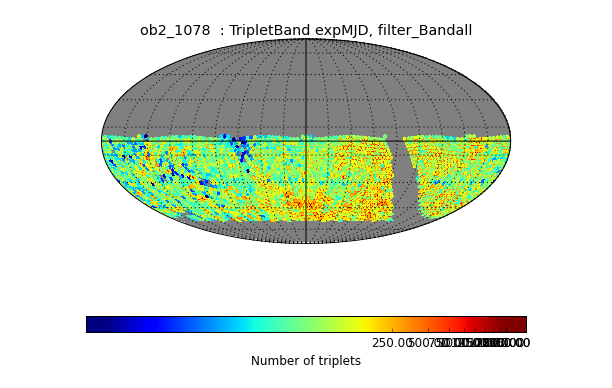LSST Metric Analysis Framework
The Large Synoptic Survey Telescope (LSST) will be a ten-year survey over most of the sky, using a telescope to be constructed in Chile and deployed in 2020. LSST is intended to address multiple science questions, and in order to characterize the telescope and optimize the observing schedule, the LSST team has constructed two major software tools for the LSST community. The Operations Simulation (OpSim) simulates multiple survey schedules (as well as observation constraints) to study the different results that could be produced by changes to the survey parameters. The Metric Analysis Framework (MAF) is a Python tool created to quantify differences between different OpSim results by establishing certain metrics that can be mapped throughout the survey area (Jones et al. 2014).
MAF can be run just with the metrics that were included from the LSST team, but can also be augmented with additional metrics contributed from the LSST community at large. To help study LSST's ability to explore time-dependent phenomena, we have created additional metrics that can be included as part of the GitHub for LSST third-party software (https://github.com/LSST-nonproject). Currently submitted is a metric that evaluates LSST's ability to detect small time-scale non-repeating transient events by looking for the number of times a given position in the sky will be observed three times in the same band, with approximately equal time intervals between each pair of exposures.
Two sample maps below show the results on two different OpSim instances; ops2.1078 and ops2.1060. Additional metrics are under development to look at transient and periodic features and will be added to the LSST GitHub as they are developed.
Contact: Michael Lund.

